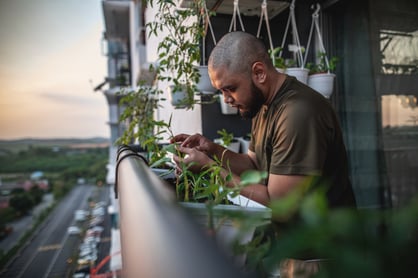Having a home garden is a simple and rewarding way to grow your own fruits, vegetables, and herbs while also being physically active. Springtime is the perfect season to begin planning which plants you want to grow, organizing the layout for your garden, and preparing the space. Gardening can add value to your life no matter your time commitment, space, or experience!
Check out these steps to get your home garden started:
- Where to Plant? Most plants thrive when they review direct sunlight, so you ideally want to place your garden in a spot where it will receive the most amount of direct sunlight throughout the day.
- What to grow? Most farmers recommend starting your first garden by growing items that you consistently eat now as well as items that can be easily preserved or stored. Each individual seed packet has directions referring to growing duration, when to harvest, and when to germinate the seeds. For best results, review each individual seed packet and plant based off those recommendations.
- Prepare the space. Some people opt to till-up the ground, talk about a great way to burn calories, others choose to build or purchase raised garden beds. The benefit of raised beds are that they allow you to maximize the space you have, especially if you live in a dense area such as the city or even an apartment. They also help to make gardening and more manageable for the first-time gardener. The downside of using raised beds are that you will need to invest more resources into the purchasing and building and filling the beds. Consider what material you use, increase nutrients to the soil by use of compost, manure, sand, and peat moss.
- Plant the seeds. It is best to refer to the seed packets for more specific instructions about depth, timing, and other important variables. Additionally, it is important to plant any tall items, such as tomatoes, corn, or anything grown on a trellis on the North side of the garden. This will allow the shorter items to still receive enough southern sun without anything impeding the direct light.
- Garden maintenance. Now that your garden is planted you want to maintain your efforts to help your garden flourish. Be sure to weed 2-3 times per week to h
- elp over growth or invasion of unwanted weeds. Water daily, keep your plants hydrated. Consider mulch or wood chips around the base of your plants.
Don’t let your lack of space keep you from gardening!
If you do not have a yard or have limit space on your property, then container gardening will be the best place to start. Many individuals will use small to large planters to grow various herbs and even some smaller fruits and vegetables. The same steps from above apply to container gardening: correct placement of the containers, proper sunlight, soil, and room to grow.


